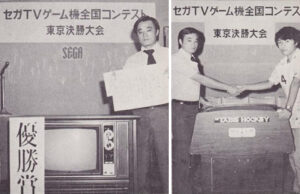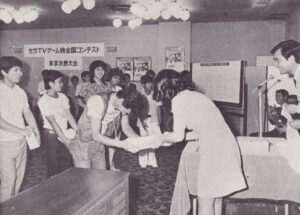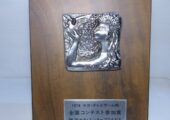Game tournaments seem to be a natural part of the industry landscape today, and the concept has only grown over the years with esports hosting multi-million-dollar contests before thousands of spectators. Even universities have signed up and created teams that compete against rival institutions in organized leagues. It’s a big industry, one that can make players rich and famous almost overnight.
The concept of game tournaments isn’t new, though. Publishers and game centers have hosted such competitions for decades. Sega most likely didn’t start the tournament trend in 1974, but it may have been the first one to take it to a national level with the Sega TV Game-ki Zenkoku Contest, or All Japan TV Games Championships. The tournament was held on August 27, 1974, at the Pacific Hotel in Tokyo and was considered the biggest event in the then-fledgling video game business. The hotel’s lavish banquet room was filled with Sega’s upper management, leading members of the press, and executives from other big leisure companies.

Right: Kuroda shakes hands with the unnamed runner-up.
The All-Japan TV Games Championship was a major affair for its time. 16 finalists between the ages of 11 and 29 were selected for the finals by lottery from over 5,000 eligible participants from over 300 locations across Japan. The game chosen for play was Table Hockey, one of Sega’s discreet logic arcade games released at the end of 1973. It was basically the cocktail table version of Hockey TV, itself a clone of Atari’s hit Pong game except that it had two sets of paddles instead of one. Clones of the Atari game were widespread during this period (Allied Leisure made one called Tennis Tourney and Taito had one called Elepong), and Sega’s first entry into the video game arena had been Pong-Tron in the summer of 1973. A sequel and Hockey TV soon followed, the latter of which was repackaged into smaller cabinets for a wider variety of potential locations. The version used in the competition was the cocktail, or horizontal model, that shared the same layout of one control knob on either end with a CRT monitor in the middle. First prize was a 20-inch color television set, and the runner-up would win a five-inch black and white set. The third-place contestant walked away with a cassette tape recorder, while the other 13 participants each took home a transistor radio. After several tense elimination rounds, 29-year-old bank employee Osamu Kuroda walked away as champion and the proud owner of a new color television.

Sega’s reason for hosting the championship event was to “promote interest in the play and sales of TV type amusement machines.” The company was already a major player in coin-operated amusement machines, and its leadership understood the importance of cultivating ties with location operators and the potential tournaments had for marketing. All the locations involved received a commemorative plaque to display, a nice token of their participation and a great bit of free advertising for Sega. Moreover, one must bear in mind that color televisions were relatively new at the time, and few households had more than a single unit of any kind.
As stated above, although there’s no certainty that the All-Japan TV Games Championship was the first arcade game tournament, there are no records of such an event prior to Sega’s. Its uniqueness lies in its sponsorship by Sega, the visibility it received in the press, and the fact that the competition was open nationwide. Creating “an atmosphere of sports competition on TV amusement games,” was part of Sega’s stated intentions with the tournament, indicating that it planned to make these kinds of events a recurring thing. The success of the championship led Sega to make it a regular event, and Marketplace magazine reported in its November 30, 1974 issue that Sega was already holding national elimination play throughout Japan. It’s unknown how that tournament played out or if any further events were held afterward.
One item that must be addressed was the use of the term “TV amusement game” by media like Cash Box and Vending Times. Today, we tend to automatically consider the term to refer to video games played on home televisions, but that wasn’t the case back in 1974. Games using a television of any kind were new, so it was likely that the press felt the need to include the “TV” in the name to clarify. Vending Times quoted Sega management as referring to the games as “TV type amusement machines,” suggesting that not only was the tournament indeed using coin-op arcade cabinets but that the games used a CRT monitor and were video-centered.
Sources
- “All Japan TV Game Championships.” Marketplace. November 30, 1974.
- Arcade Hero. “As Arcade Heroes Turns Six, A Look Back at Pong Variations.” Arcade Heroes, December 3, 2012.
- “Sega Hosts TV Game Tourney in Tokyo.” Cashbox, October 16, 1974, 45.
- “Sega Sponsors All Japan TV Game Championships.” Vending Times. December 1974.
- Smith, K. “Early Video Game Tournaments and Players.” The Golden Age Arcade Historian. April 9, 2013.
- Zhouxiang, L. “The Birth and Development of Sports Video Games From the 1950s to the Early 1980s.” Human Kinetics Journal, 54 (2). September 19, 2023.
Images courtesy of Cashbox, Marketplace, and Yahoo! Auctions.




Recent Comments